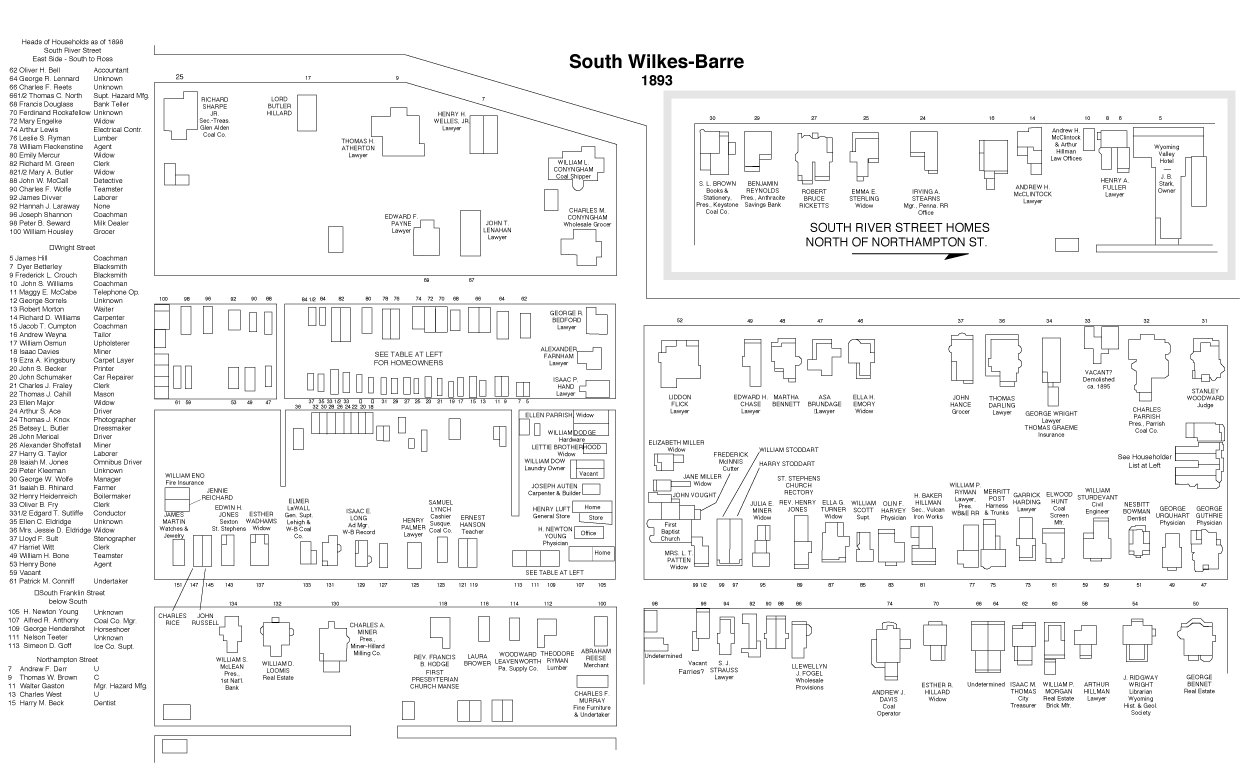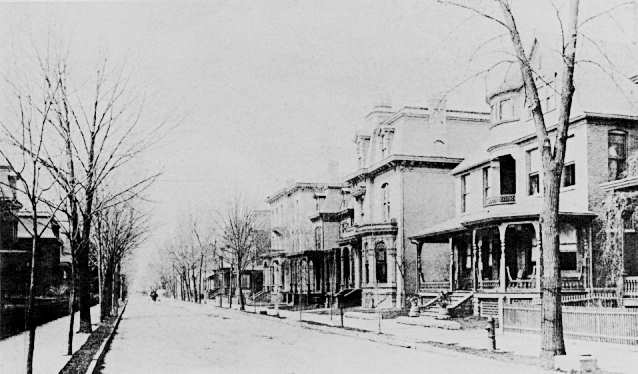
The development of an urban university,
located only two blocks from the center of a medium-size city, presents unique problems
not experienced by more traditional schools evolving on empty land in suburban or
rural America. The key word in urban development is displacement. A center-city university
must adapt its city environment to its own uses.
Initially, this usually means converting existing buildings for educational purposes.
Eventually, it means replacement of former residential or commercial structures by
newer buildings specifically designed for educational use. These pages are designed
to show how this process influenced the development of Wilkes University from its
opening in 1933 as Bucknell University Junior College to its present.
Peruse the stories and maps linked from the right columns of these pages to learn
about the intriguing history of Wilkes University and the city it calls home -- Wilkes-Barre,
Pennsylvania.

The university has established itself primarily along South River and South Franklin
streets, the two major thoroughfares in the southwest quadrant of downtown Wilkes-Barre.
The streets lie adjacent to the Susquehanna River, a location which normally would
have developed as an industrial district. However, the evolution of Wilkes-Barre's
waterfront followed a different pattern. Normally canals and railroads in interior
towns followed the river as the path of least resistance and industrial growth followed
the transport corridor. However, the North Branch Canal, which originally provided
access from Wilkes-Barre to the outside world, turned inland south of Wilkes-Barre
and ran some five blocks inland from the river as it passed the center city, returning
to the river front about one and one-half blocks north of the public square. While
the Lehigh and Susquehanna Railroad, the first to enter Wilkes-Barre, built its terminus
on the river front, the station was soon abandoned and the city's railroad corridor
paralleled, then incorporated, the canal bed.
As a result, the southwest quadrant became a region of homes rather than factories
and warehouses. The area along the river bank was occupied by the residences of the
rich and powerful, including coal barons, bankers, and leading lawyers. The homes
of lesser lawyers, doctors, prominent businessmen and those in upper management positions
were further inland. There was also a district occupied by lower economic groups.
The wealthy followed the river, building their homes along a branch street known as
West River. South River below this point had smaller homes occupied by common tradesmen.
Wright Street, an alley between River and Franklin, had tiny houses, one eight-residence
row structure, and several tenements, catering to a highly mobile blue-collar population,
few of whom owned the houses in which they lived. These included tailors, coachmen,
blacksmiths, miners, masons and painters, among others. Among the most intriguing
households in this district was the McCabe household at 11 (later 21) Wright Street.
All of the employed women of the family appear to have been telephone operators and
must have represented a significant proportion of the entire operator staff of Wilkes-Barre
in 1894, when phones were still in their infancy.
Similarly, the fate of the Lehigh & Susquehanna Depot shows how the Wilkes-Barre
waterfront was diverted from the normal urban fate early in the city's history. Following
removal of the station, William L. and Charles M. Conyngham, brothers who made their
fortunes in the mining and distribution of coal, built two of the largest mansions
along the riverfront on the site. Today the land occupied by the two homes holds the
Dorothy Dickson Darte Center for the Performing Arts.
a unique urban setting. An area of predominantly large homes in a park setting along the Susquehanna River, the first portions of the area occupied by Bucknell University Junior College, provided an academic environment far more traditional than was normally true of urban universities. As Wilkes grew, the redevelopment of a decaying blue-collar area adjacent to the campus provided the opportunity for new construction to meet the college's needs.